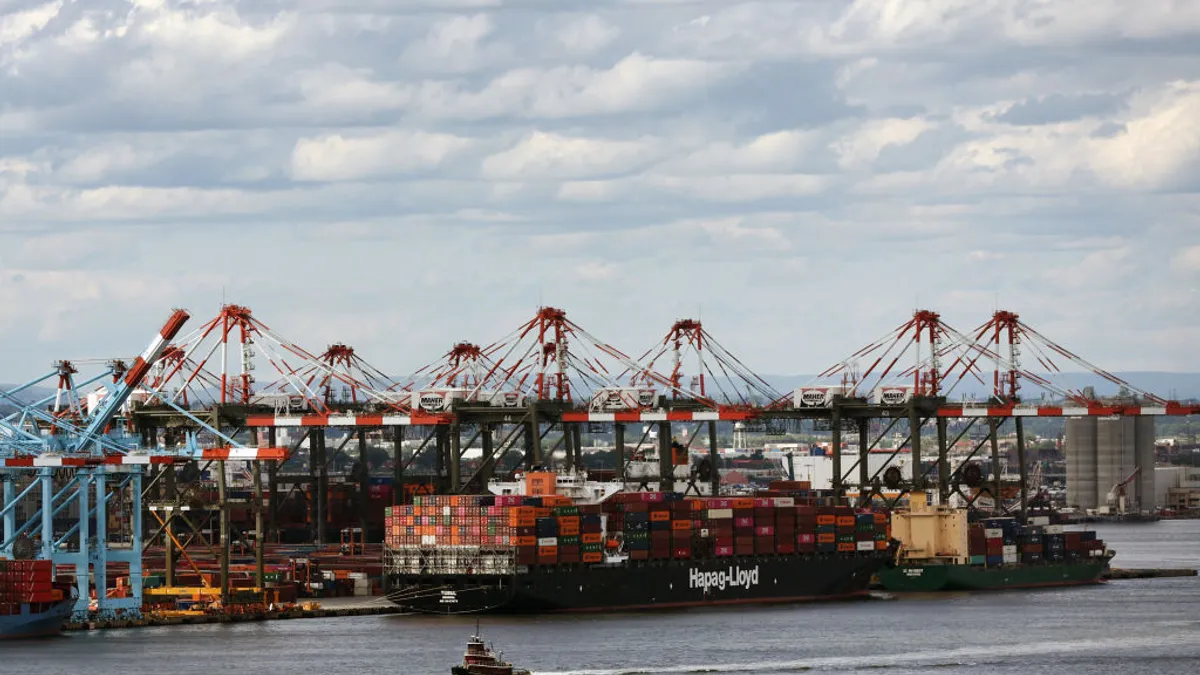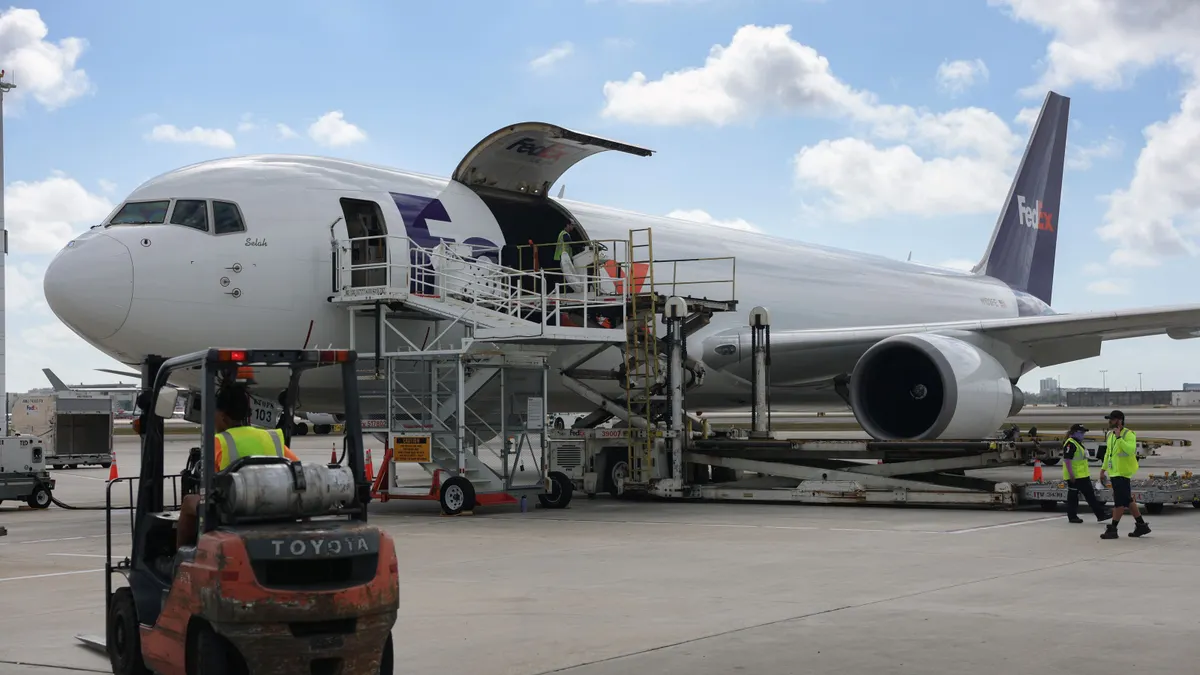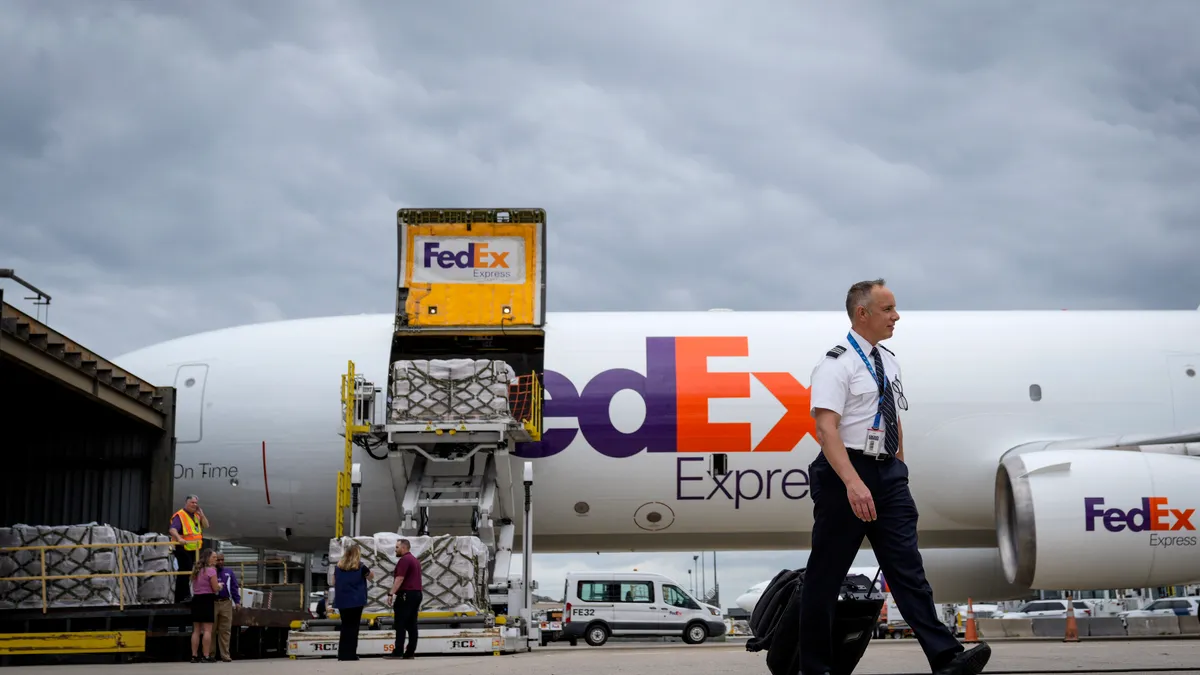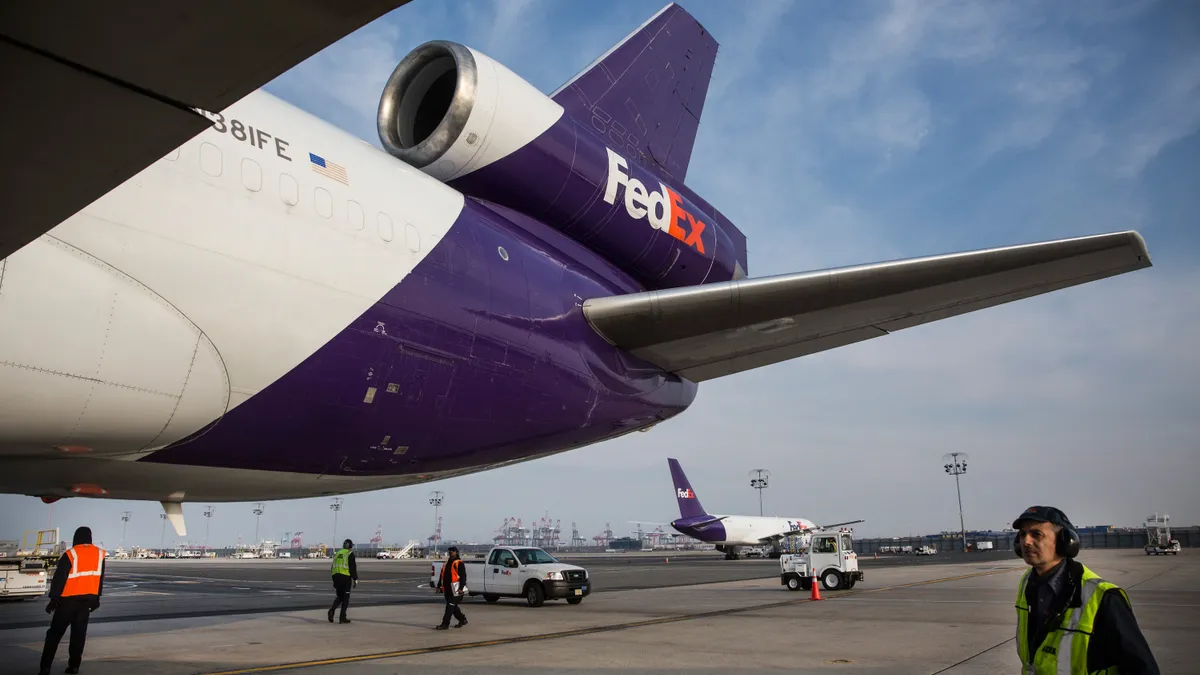A reduction in air traffic ordered by the Federal Aviation Administration will have limited short-term impact on cargo flows, but shippers should still map out contingency plans, experts told Supply Chain Dive.
The FAA last week ordered a 10% cut in air traffic at 40 major airports across the United States due to an ongoing government shutdown. The agency told airports to reduce traffic by 4% by Nov. 7 and scale up to 10% by Nov. 14, per an emergency order.
On Sunday, several outlets reported that the U.S. Senate voted to move forward with a bill that would end the shutdown. However, the timetable remains unclear, with the resolution still needing passage in the Senate and the House of Republicans, as well as President Donald Trump’s signature.
“Once funding is restored and the FAA has confidence the stress in the system has adequately decreased, the FAA expects to roll back operational restrictions required by this order to restore normal operations,” the agency’s order says.
In the meantime, as airports and carriers implement changes to meet the FAA’s targets, the overall impact on air freight is expected to be limited, especially because overseas flights are exempt, according to Mike Short, president of Global Forwarding at C.H. Robinson.
“International operations represent a much larger share of air cargo movement, and, for now, international flights remain fully exempt,” Short said in an email, noting that any effects will be felt domestically.
“Because most U.S. domestic air freight moves in the bellies of passenger aircraft versus cargo planes, reductions in commercial routes will tighten air capacity in those markets,” Short said. “So the domestic air market could see temporary constraints and longer transit times.”
Most of the traffic cuts thus far have targeted short-haul regional flying, which doesn't typically include large amounts of air cargo demand, according to Derek Lossing, senior industry advisor for e-commerce and transportation at Cirrus Global Advisors.
“So far, we are seeing very minimal impact to air cargo shippers and forwarders,” said Lossing, who previously served in logistics leadership roles at Amazon, in an email. “The US airlines are heavily protecting their international operations, and their hub to hub flying, which is the majority of widebody capacity in North America.”
How are carriers responding?
Carriers such as FedEx, UPS and Delta Cargo have not seen severe impact to their operations, particularly because the order requires traffic cuts to be made to flights between 6 a.m. and 10 p.m. local time.
“A majority of our flights operate at night, outside of the FAA-restricted daily timeframe, and we have confirmed with the FAA that our international flights will continue without interruption,” FedEx said in a statement emailed to Supply Chain Dive.
The carrier said it has modified its operations to meet the FAA’s requirements while maintaining cargo flows, according to the email.
Rival UPS said is confident it can maintain service levels despite the cuts in air traffic, similarly emphasizing many of its flights occur overnight.
“We’re monitoring our operations at affected airports and flexing our network to protect critical shipments of healthcare items and essential manufacturing goods,” UPS said in an emailed statement.
Delta said there may be some impact to domestic schedules, but that all long-haul international services are expected to continue uninterrupted, in a statement on its website.
“Delta Cargo is working to minimize impacts to shipments by consolidating freight on available flights and maintaining network reliability,” Delta said. “At this time, no action is required from customers.”
Meanwhile, Clearjet, a company that uses passenger flight capacity to move customers' packages, said it is “built exactly for this kind of volatility.”
“When capacity tightens, we re-route in real time across multiple airlines and airports to keep shipments moving,” Clearjet CEO Chris Guggenheim said in an emailed statement.
Contingency plans
Although capacity has not been drastically altered, shippers and carriers alike could face a crunch if the reductions stay in place long term, as the FAA’s order was made in response to what has become the longest government shutdown in U.S. history.
If the government shutdown persists, flight reductions will continue to increase primarily in small, regional markets and pressure air freight volumes, according to Lossing. He further noted that as more flights are canceled, airports may prioritize passenger traffic operations over cargo loading.
“Right now, [it’s] about communication with the airlines and forwarders, and making sure there are backup plans for the freight- whether that’s booking on a later flight or shifting to LTL trucks to other gateways or hubs,” he said.
Turning to alternative freight modes to circumvent any impacts to domestic air cargo movement presents its own difficulties, however.
“Truckload and expedited ground networks can absorb some displaced volume, but not without challenges given that short-term surges drive spot rate volatility and equipment repositioning,” Short said, noting that C.H. Robinson is also analyzing customers' inventory to determine how existing stock can be used to plug potential gaps.
Editor’s note: This story has been updated with additional information after the U.S. Senate voted to move forward with a measure to end the government shutdown.























